A forensic analysis of the element concentration found in the Hypatia stone finds evidence in the cometary fragment, which may have impacted Earth 28 million years ago, of a supernova origin story. Plus, Ceres, Mars, and this week in rocket history, we look back at SpaceX’s COTS Demo Flight 2.
Podcast
Show Notes
Confirmed: Aurorae can be noisy
- Aalto University press release
- “Sound producing mechanism in temperature inversion layer and its sensitivity to geomagnetic activity,” Unto K. Laine, 2022 May, BNAM2022 Baltic-Nordic Acoustic Meeting
Former planet Ceres moved to asteroid belt
- Agência FAPESP press release
- “Dynamical origin of the Dwarf Planet Ceres,” Rafael Ribeiro de Sousa et al., 2022 March 25, Icarus
The Sun drives Martian dust storms
- University of Houston press release
- “Mars’ emitted energy and seasonal energy imbalance,” Ellen Creecy et al., 2022 May 16, PNAS
InSight reaching end of mission
- NASA press release
Unmixed batter from the solar system’s formation
- University of Johannesburg press release
- “The chemistry of the extraterrestrial carbonaceous stone “Hypatia”: A perspective on dust heterogeneity in interstellar space,” Jan D. Kramers et al., 2022 April 28, Icarus
Rocket launch pollution studied
- AIP press release
- “Atmospheric pollution from rockets,” Ioannis W. Kokkinakis and Dimitris Drikakis, 2022 May 17, Physics of Fluids
This Week in Rocket History: SpaceX COTS 2+
- PDF: Commercial Orbital Transportation Services (NASA)
Transcript
Today’s show is a mix of objects inside and outside the solar system.
And also an object that made it from the outside in.
And pretty aurorae maybe not just pretty but may sound neat too.
And I get to look back at the mission that got me into spaceflight, SpaceX’s COTS Demo 2.
All of this now, right here on the Daily Space.
I am your host Dr. Pamela Gay.
I am your host Erik Madaus.
And we’re here to put science in your brain.

One of the ongoing debates among skywatchers of all kinds has been: Do aurorae make noise? For thousands of years, people have reported noises associated with these magnificent sky displays, but like researchers trying to document ghosts, consistent and rock-solid evidence has eluded capture.
But maybe that is changing.
In the cold north of Finland, Professor Emeritus Unto Laine has been using his retirement years to seek out auroral sounds and define the conditions that make them possible.
Aurorae occur when solar particles interact with our atmosphere and transfer their energy to gasses in the sky, which get excited and glow. Oxygen can shine red or green, and nitrogen adds highlights of blues and purples. That glowing gas is often tens of miles to over 150 miles up. That isn’t what we’re hearing.
Laine has been looking for an effect more down toward Earth and theorized that electrical discharges can occur where a layer of warm air builds between two cooler layers. Called a temperature inversion layer, these kinds of warm air regions can be found 70 meters up, which is a distance that you are close enough to hear.
Laine recorded audio while measuring geomagnetic data. He found sixty candidate sounds all linked to changes in the geomagnetic field. According to Laine: Using the geomagnetic data, which was measured independently, it’s possible to predict when auroral sounds will happen in my recordings with 90% accuracy.
This work, which is presented at the Joint Acoustics Conference in Aalborg, Denmark, suggests that the same kinds of conditions that can be linked to aurorae can be linked to these sounds. This means you can have sounds without aurorae and aurorae without sound, but both activities require our Earth’s magnetic field to be fluctuating due to something like solar activity.
So do aurorae make sounds? No. Do the conditions that make aurorae possible also sometimes lead to crackling electrical discharges we can hear. Yes.
Are their ghosts? We still have no evidence for that.

Where you are in the solar system changes just how much of an effect the Sun has on you. For Earth, the Sun can cause bright aurorae that can extend down into the mid-latitudes. For comets, the changing distance to the Sun is what gives us cometary tails. But if a larger body was moved from the outer solar system to the inner, that distance to the Sun has different effects.
Scientists trying to understand the composition of the thin, misty atmosphere on Ceres have now discovered that the dwarf planet likely formed in the outer solar system and was moved inward. The early days of planetary formation were turbulent times, with Jupiter and Saturn vying for space, ice giants like Uranus and Neptune getting pushed outward or even yeeted out of the solar system, and smaller bodies bouncing around like billiard balls as gravitational forces pulled on them in every direction. In the journal Icarus, a team of researchers explains how they used computer models to work through their theory that Ceres formed farther out.
Let’s start at the beginning. Ceres, as observed by the Dawn mission, turns out to have quite a bit of ammonia in that thin mist, which is caused by the warmth of the Sun’s light. That mist comes up from below the surface, and it’s actually a mix of water and ammonia. And then there are all those icy deposits at the bottom of the craters on Ceres. But asteroid belt bodies don’t tend to have any sort of ice. They’re dry and dusty. And that’s why this team wanted to see if Ceres possibly formed elsewhere.
That’s where these huge computer models came in. The team started with the assumption that Ceres was a planetesimal in its own right – those bits of rock and gas and dust thought to be the building blocks of larger bodies. As for the result of the simulations, lead author Rafael Ribeiro de Sousa explains: Our simulations showed that the giant planet formation stage was highly turbulent, with huge collisions between the precursors of Uranus and Neptune, ejection of planets out of the Solar System, and even invasion of the inner region by planets with masses greater than three times Earth’s mass. In addition, the strong gravitational disturbance scattered objects similar to Ceres everywhere. Some may well have reached the region of the Asteroid Belt and acquired stable orbits capable of surviving other events.
On top of that discovery, the team’s simulation also found that there were at least 3,600 Ceres-like objects in the early solar system out beyond the orbit of Saturn. Statistically, that improved the chances that Ceres was formed farther out and pushed inward by all the chaos. But the chemical signatures seal the deal. Ceres is too much like objects formed beyond the Frost Line to have started off in the asteroid belt.
Our Sun is something of a busybody star, and it seems responsible for a whole lot of chaos.

Right now on Mars, two of our favorite missions are suffering under a layer of dust. Both InSight and Ingenuity are solar-powered, and the one-two punch of oncoming winter and layers of dust making their solar panels less efficient means these missions are likely reaching the end of their lives. This isn’t a first. In 2018, with massive dust storms blocking all views of the red planet’s surface, all contact was lost with the Opportunity rover.
Now, in new research published in the Proceedings of the National Academy of Sciences, we learn that the Sun’s energy, collected in Mars’s desert landscape, can drive these world enveloping storms. This work is led by Ellen Creecy who notes: One of our most interesting findings is that the energy excess – more energy being absorbed than emitted – could be one of the generating mechanisms of Mars’ dust storms. Understanding how this works on Mars might provide clues about the roles Earth’s energy budget takes in the development of severe storms, including hurricanes, on our own planet.
This is a reminder that hurricane season is approaching, and we are seeing extremely warm ocean waters. While hurricanes don’t yet engulf even entire continents, the same physics that is driving dust storms on Mars is driving more powerful hurricanes developing on Earth.
Speaking of InSight and Mars’s dust, we have some bad news. Our favorite lander is losing power due to all that dust on its solar panels, and the operations team has not found a way to dislodge it. Science operations are expected to end this summer, and the end of the mission is likely to occur in December.
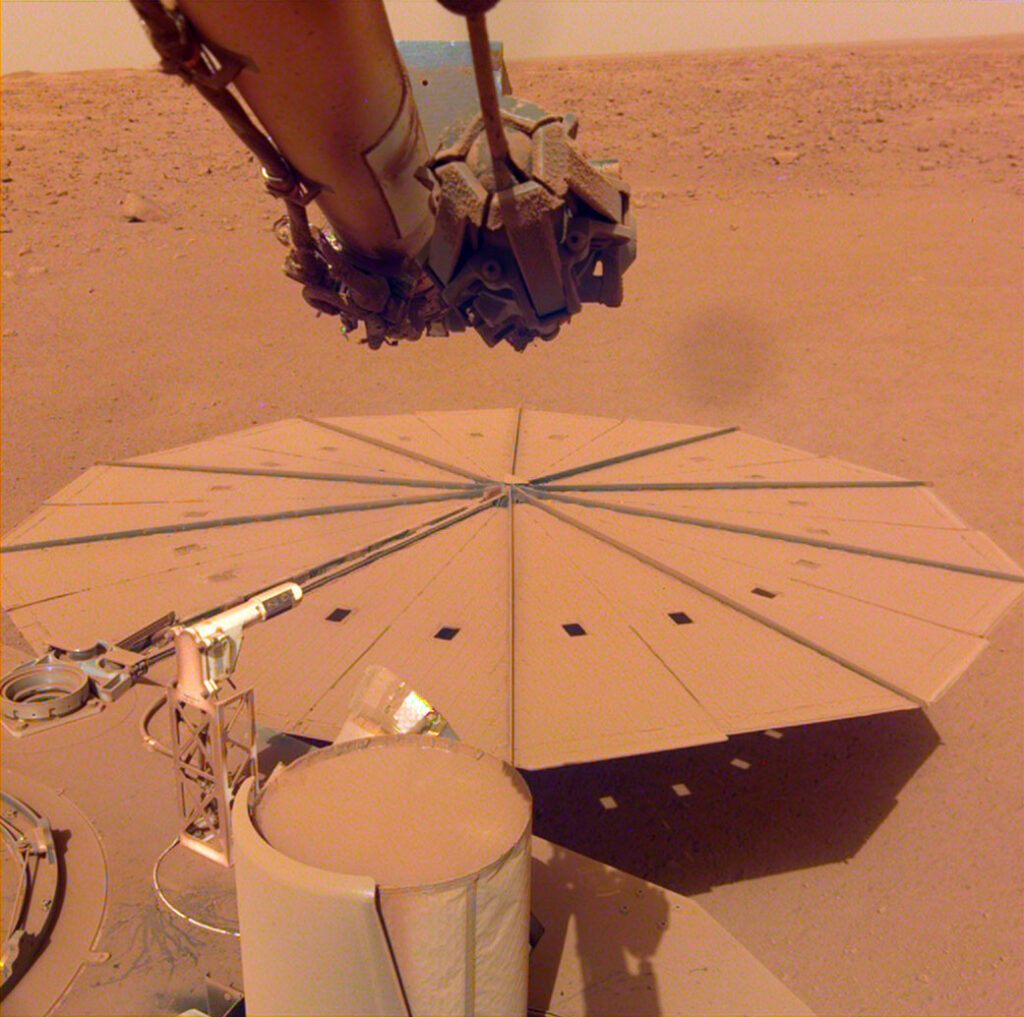
InSight landed on Mars back in 2018 and has been through a lot. There was the heat probe that couldn’t go underground because the martian soil behaved differently than expected. There was dust collecting on the solar panels. There was feedback from winds affecting the seismometer. And through it all, InSight’s team worked to keep the science going, using the robotic arm and scoop in ingenious ways.
InSight has collected data on more than 1,300 marsquakes, including the magnitude 5 that occurred earlier this month. With all that information, scientists have mapped the interior of the red planet.
And InSight also collected weather and magnetic field data, allowing scientists to study those aspects as well. It has been the little mission that could.
While we are saddened to hear that the end of the mission is finally approaching, we will continue to report on all the amazing discoveries scientists make from the data collected.
Ad Astra, InSight. We salute you.
On that cheery note, let’s turn away from our world and take a look at rocks from space.
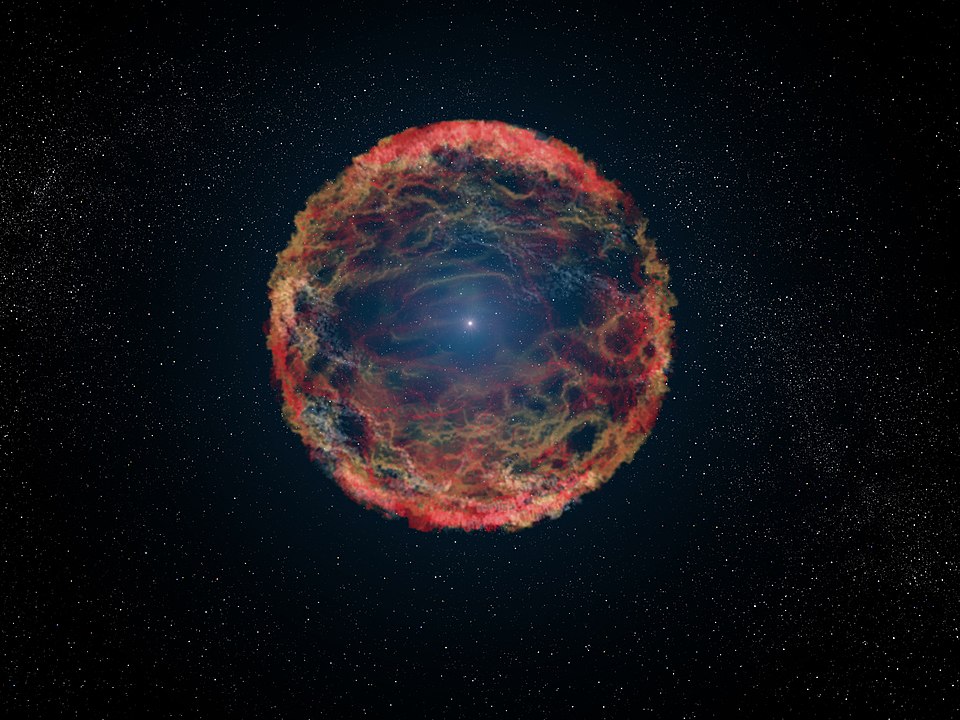
I am not the best cook, but I can make some really good oatmeal muffins. Usually. There is always that one place in that one muffin, however, where things just didn’t mix right, and a clump of flour or sugar makes it through the baking process to break apart as a gritty surprise. These failed attempts at muffin mixing aren’t unique to my baking attempts. In fact, our solar system has at least one unmixed rock that is the remains of just one of the many supernovae that formed the material of our solar system. Named Hypatia and found in the desert of Egypt, this meteor has a pocket of material that is best explained as the raw ingredients from a type 1a supernova.
Lead researcher Jan Kramer explains: We found a consistent pattern of trace element abundances that is completely different from anything in the solar system, primitive or evolved. Objects in the asteroid belt and meteors don’t match this either. So next we looked outside the solar system.
This work is published in a new paper in the journal Icarus.
Kramer further explains: In a sense, we could say, we have ‘caught’ a supernova Ia explosion ‘in the act’ because the gas atoms from the explosion were caught in the surrounding dust cloud, which eventually formed Hypatia’s parent body.
Let’s break that down.
A type 1a supernova is an exploding white dwarf star. They explode with a specific energy and brightness, and a well-understood variety of atoms formed in the process. In theory, that material, along with the material from any number of other supernovae, comes in a whole mix of elements. That material then forms a giant molecular cloud, mixing with other material left over from the formation of the universe. And all this mixing of atoms and molecules then eventually forms solar systems like ours, after it gets well mixed – we thought – but just like my Kitchen Aid can struggle, so too can the Universe.
So now you know.
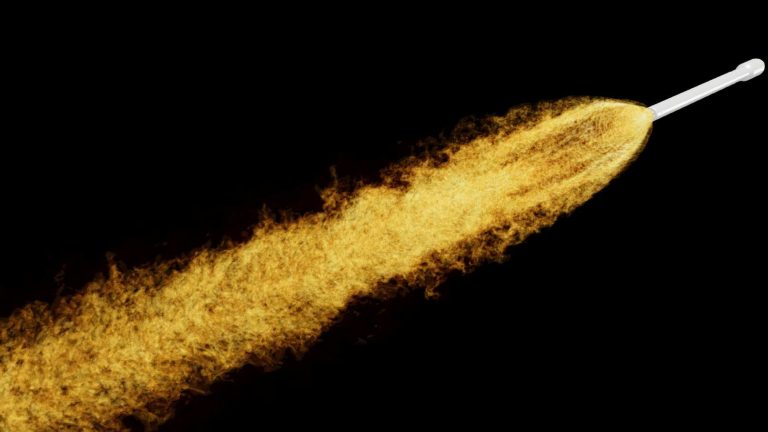
As rockets launch more and more, their environmental effects should be taken into account, according to a new study published in the journal Physics of Fluid.
Rockets on the whole don’t produce as much pollution compared to global aviation, but this will change as more and more of them are launched. The biggest offenders in this are SpaceX, with their seemingly weekly Starlink launches, but also suborbital tourism providers Blue Origin and Virgin Galactic.
The team from the University of Nicosia studied the effects of a simulated rocket plume up to an altitude of 67 kilometers. They found that the combustion product nitrogen oxide was concentrated up to an altitude of 10 kilometers, where the atmosphere can spread it higher and further. The 10-kilometer limit is because of the pressure when it leaves the end of the rocket engine bell. According to the team’s fluid dynamics simulation’s worst-case scenario, the rocket emits enough nitrogen oxide to make two cubic kilometers of atmosphere hazardous to humans
Carbon dioxide is another combustion product, and the team found that a rocket would produce the equivalent of 26 cubic kilometers of CO2 for every one kilometer of altitude traveled.
The team does not know how long it takes for these different combustion products to disperse into the atmosphere. Above a certain level of rocket launches, the natural level of pollutants will go up. This will make climate change worse. Paper co-author Dimitris Drikakis said: We hope that commercial flight companies, such as SpaceX, Virgin Galactic, and the New Shepard, and their associated engine manufacturers, will consider these effects in future designs.
And now, it’s time for this week in rocket history. Ten years ago counts as history, right?
This Week in Rocket History
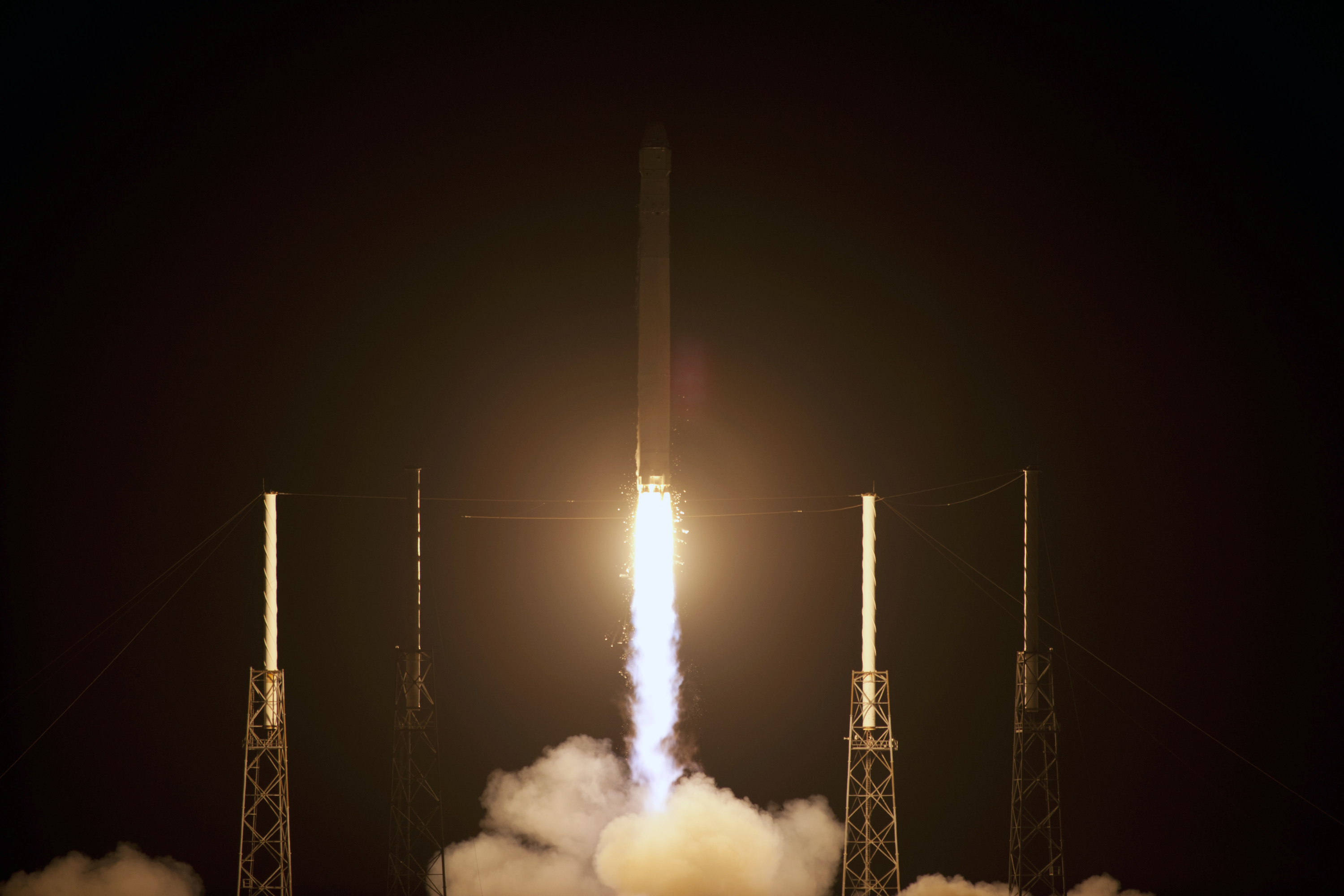
This Week in Rocket History is a launch I’ve wanted to cover for a long time, the one that got me interested in spaceflight, SpaceX’s COTS 2+.
Back in ye olde days of 2006, NASA started a program for private companies to launch cargo to the International Space Station (ISS). This was necessary because of the pending retirement of the Space Shuttle. NASA thought that cargo delivery to the ISS was a good starting point for future commercial use of Low Earth Orbit. It would also free NASA to do more important things in deep space.
The program started with six companies receiving funding from 21 proposals received. These were narrowed down to two in 2008: SpaceX and Orbital Sciences. Orbital Sciences is well known for developing the Pegasus, the first commercial orbital rocket, which first flew in 1990. At the time of the contract award, SpaceX had not launched a single Falcon 1 successfully, so NASA was taking a bit of a gamble by awarding them a contract. The COTS contract was critical for early SpaceX, according to President Gwynne Shotwell: We would not be the company that we are today without the support of NASA.
The COTS program required several demonstration missions before a Dragon could visit the ISS. SpaceX had to prove that the capsule could go to orbit and back safely. It was up to SpaceX and Orbital Sciences to propose and NASA to approve what milestones these missions would demonstrate.
The rendezvous system, called DragonEye, was demonstrated on two of the last Space Shuttle missions, STS-127 and 133.
The first flight of the Falcon 9 in 2010 carried an instrumented nose cone shaped like a Dragon but no real payload.
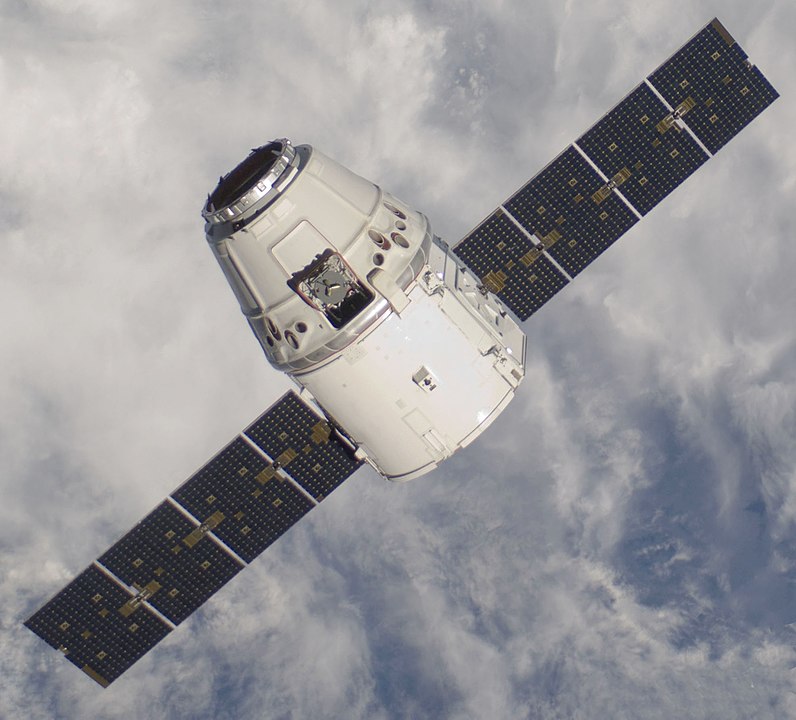
The second flight of Falcon 9, also in 2010, carried a real Dragon capsule capable of surviving reentry, but only a partially functional trunk. At the end of the mission, it successfully landed, making SpaceX the first private company to recover something from orbit.
The next demonstration would see a Dragon approach very close to the ISS and then berth with the station a day later. The original plan was for the rendezvous and berthing to be on separate missions, but SpaceX convinced NASA that combining the objectives was better. Having to build only one capsule and rocket also saved a lot of money because at this point neither Falcon 9 nor Dragon was reusable.
COTS 2+ was the last of Dragon’s orbital demonstration missions and would result in SpaceX becoming the first private company to visit the International Space Station. I’m very carefully not saying ‘docking’ because Cargo Dragon 1 was not capable of doing this. Instead, it would maneuver to a few meters from the station, where it would be grappled by the Canadarm controlled by an astronaut and attached to the station.
The modified COTS 2+ mission launched on the third flight of Falcon 9 on May 22nd, 2012. I was in middle school. [Ed. note: Oh, that’s cute.]
It would spend almost ten days in space, six of those attached to the ISS. During the first three days of the mission, SpaceX first demonstrated different systems on Dragon while it was hundreds of kilometers from the ISS. Later, Dragon flew 2.5 kilometers under the ISS without stopping, while the crew verified that they could command Dragon by turning on its strobe light. After this, NASA cleared it to approach for real the next mission day.
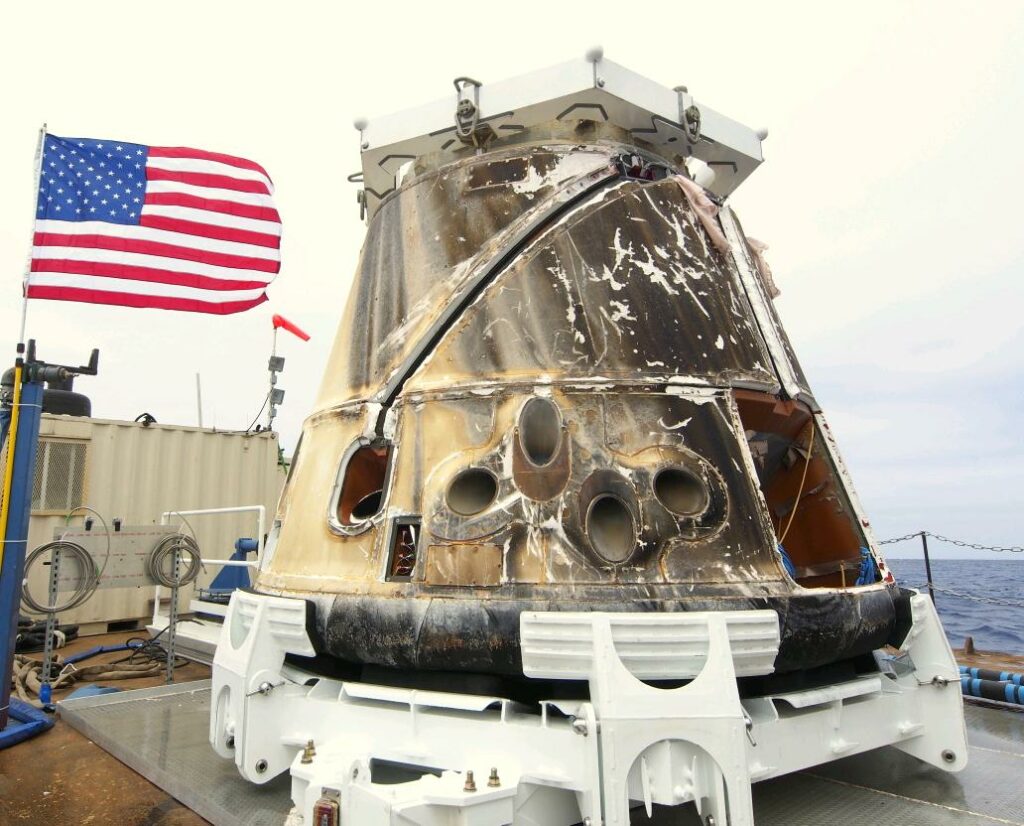
After several planned holds in its approach as it got closer, Dragon was finally given permission to approach the capture point 9 meters from the station. Astronaut Donald Petitt grabbed Dragon for the first time and attached it to the station. The approach was tense because the rendezvous system was confused by a reflection from one of the modules, but SpaceX quickly uploaded a fix.
Once the spacecraft was attached, the astronauts first needed to ensure it was safe to enter. The station’s air is very important, and there are many procedures to follow before opening a capsule’s hatch. Once that was done, the station crew unloaded the cargo. After the capsule was unloaded, it spent a few more days at the ISS while astronauts packed it with cargo for return. Then, it was removed from the ISS and returned to Earth. NASA observed the spacecraft’s reentry with infrared cameras to gather data. After splashdown, it was taken to the company’s testing center in McGregor, Texas, for processing.
Dragon was officially certified to carry cargo to and from the ISS on August 23rd, 2012. The COTS 2+ capsule is on display at the SpaceX HQ, hanging from the ceiling in front of the employee cafeteria. If you watch a SpaceX stream, you can sometimes see it in the background.
Statistics
And now, for some statistics.
The number of toilets in space is seven: four on the ISS, one on Soyuz MS-21, one on the Crew Dragon Freedom, and one on Tianhe.
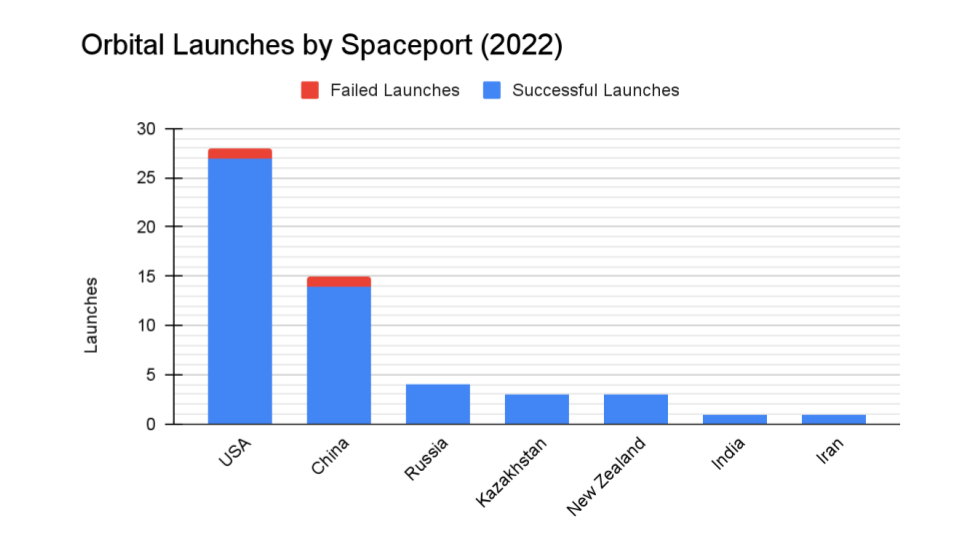
We keep track of orbital launches by launch site, also called spaceport. Here’s that breakdown:
USA 28
China 15
Russia 4
Kazakhstan 3
New Zealand 3
India 1
Iran 1
From those 56 launches, a total of 1,013 spacecraft were put into orbit.
Your random space fact for this week is that the entire core of the Moon is off-center slightly and shifted toward Earth.
This has been the Daily Space.
You can find more information on all our stories, including images, at DailySpace.org. As always, we’re here thanks to the donations of people like you. If you like our content, please consider joining our Patreon at Patreon.com/CosmoQuestX.
Credits
Written by Pamela Gay, Beth Johnson, Erik Madaus, and Gordon Dewis
Hosted by Pamela Gay, Beth Johnson, and Erik Madaus
Audio and Video Editing by Ally Pelphrey
Content Editing by Beth Johnson
Intro and Outro music by Kevin MacLeod, https://incompetech.com/music/


 We record most shows live, on Twitch. Follow us today to get alerts when we go live.
We record most shows live, on Twitch. Follow us today to get alerts when we go live.